GTP News, Advice & Tips

The Australian Government has announced significant changes to the Higher Education Loan Program (HELP), including HECS-HELP loans, aimed at reducing the financial burden on university graduates. These reforms, effective from the 2025 financial year, are set to benefit approximately three million Australians. 20% Reduction in Help Debt From June 1, 2025, all outstanding HELP debts – including HECS-HELP, FEE-HELP, SA-HEPL, OS-HELP and Vet student loans will be reduced by 20% before any indexation is applied. This measure is expected to alleviate approximately $16 Billion in student debt across the country. The Australian Tax Office will automatically apply this reduction to eligible accounts. https://www.education.gov.au/higher-education-loan-program/20-reduction-student-loan-debt/faqs-20-reduction-all-outstanding-help-loan-debt?utm_source=chatgpt.com Change to Repayment Thresholds Effective July 1, 2025, the minimum income threshold for compulsory HELP repayments will increase from $54,435 to $67,000. Additionally, a marginal repayments system will be introduced, where repayments are calculated only on income above the new threshold, rather than on total income. This adjustment means that graduates earning below this new threshold will not be required to make compulsory repayments, and those earning above it will pay a smaller percentage of their income towards their debt. These reforms are part of the governments broader effort to make higher education more accessible and to support graduates in their financial journey’s.
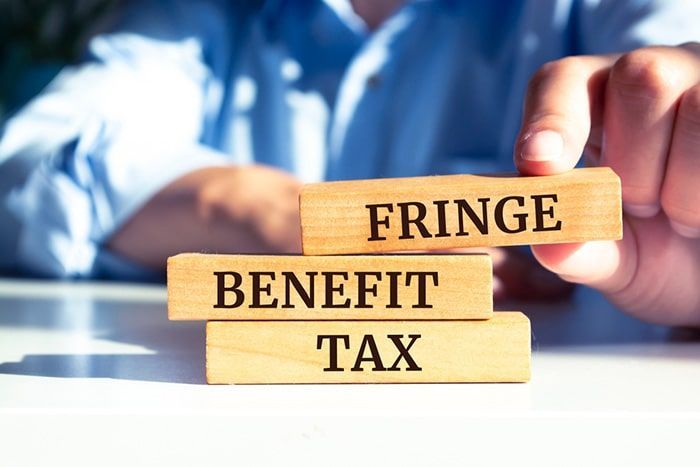
With Christmas just around the corner, many businesses are planning parties to celebrate the year. But before you book the venue, it’s worth understanding how Fringe Benefits Tax (FBT) may apply. What Is FBT? FBT is a tax employers pay on certain non-cash benefits provided to employees, such as entertainment. Whether your Christmas party attracts FBT depends on where it’s held , who attends , and how much it costs . When FBT Applies On your business premises (during work hours) Usually exempt from FBT if only employees attend. Offsite (e.g., restaurant or venue) If the cost is under $300 per person (including GST) and the event is infrequent, it’s usually exempt under the minor benefits rule . If it costs over $300 per person , FBT generally applies . Who attends Employees: May be exempt if cost is under $300. Employees’ partners: Also counted separately for the $300 rule. Clients: Not subject to FBT, but not tax deductible. Quick Examples
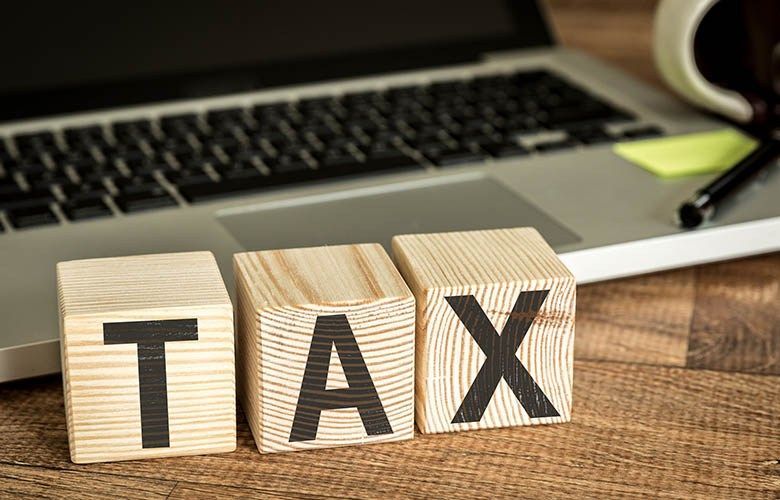
Federal Treasurer’s announced on 13 October 2025 changes to the proposed Division 296 tax measure which applies additional tax to earnings attributable to an individual’s total superannuation balance (TSB) in excess of $3 million. The start date for the revised measure has been pushed back to 1 July 2026 with the first Div 296 tax assessments in respect of the 2026-27 financial year being issued in 2027-28. The changes announced included introducing a second large superannuation balance threshold of $10 million with an additional 25% tax imposed on earnings attributable a total superannuation balance (TSB) in excess of $10 million, indexing the large balance thresholds of $3 million and $10 million to CPI, and moving to a realised earnings approach that aligns to existing income tax concepts. No longer will the tax be imposed on unrealised gains. Changes will now make this tax a two tier approach; 15% extra tax on earnings attributable to a TSB above $3 million up to $10 million, meaning a total tax rate of 30% applied to this portion of earnings 25% extra tax on earnings attributable to a TSB above $10 million, meaning a total tax rate of 40% applied to this portion of earnings Both thresholds will be indexed to the Consumer Price Index (CPI). The $3 million threshold will be indexed in increments of $150,000 and the higher $10 million threshold will be indexed in increments of $500,000. Funds will need to calculate taxable/realised earnings and attribute to fund members. Adjustments will be made for elements such as contributions and pension phase income. Calculations closely align to existing tax concepts – it will not include unrealised gains. Please note this is not yet law (must pass both Houses of Parliament). Start date is proposed to be 1 July 2026, with the first assessment against the large balance thresholds on 30 June 2027. ATO will send a tax assessment for the additional tax which can be paid from either super or personal funds. Does not apply to everyone – only those over $3 million at 30 June.
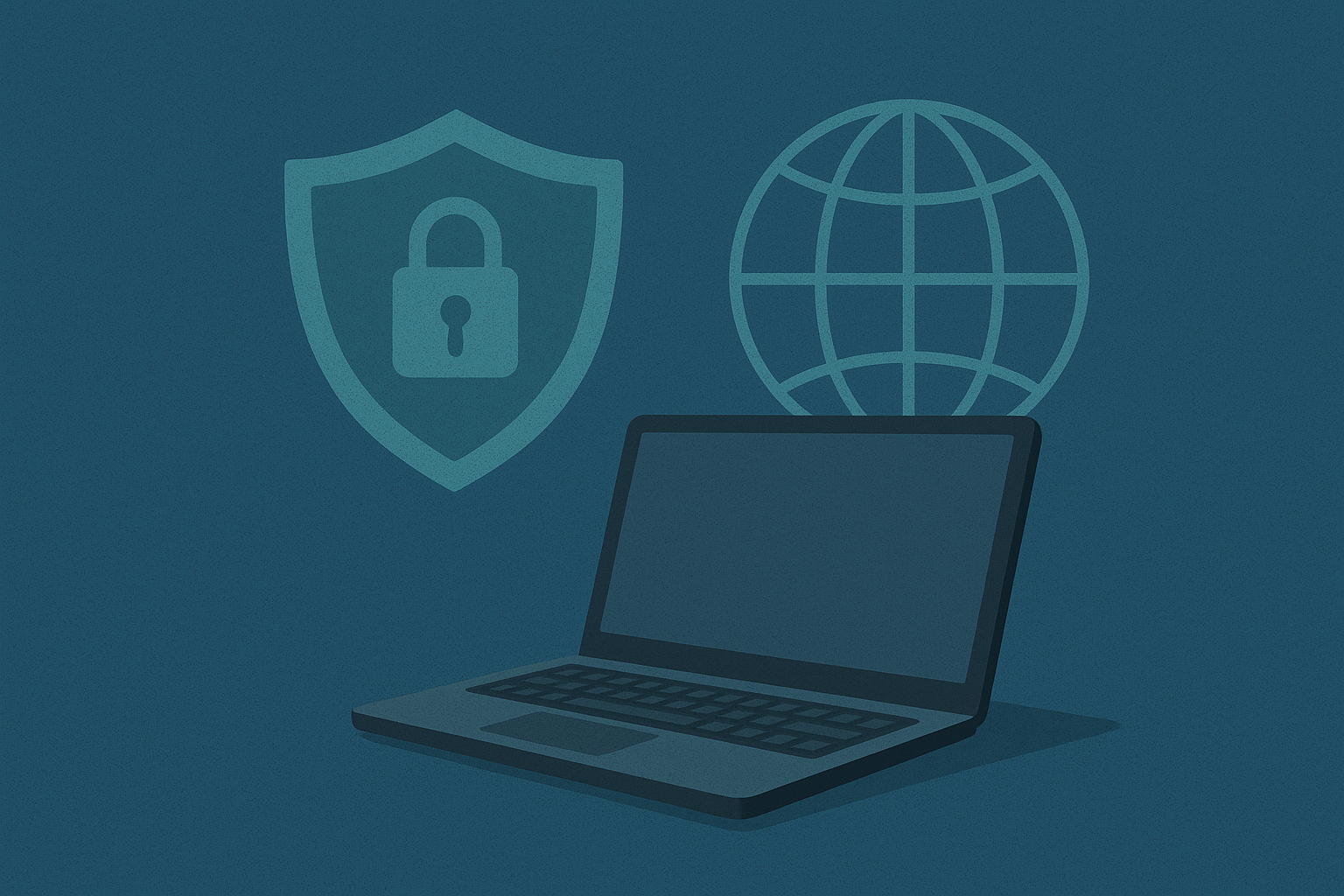
In this increasingly digital age, small businesses are becoming more and more vulnerable to the threat of cybercrime. In particular, there has been an increase in supply chain attacks targeting small businesses. Cybercriminals are constantly adapting their tactics and using AI to fuel their attacks. As technology advances, so does the risk to your sensitive data. This increasing risk means it’s more important than ever to get the basics right. The good news is, AI still can’t beat smart cyber habits. October is Cyber Security Awareness Month, so we’re here to equip you with four essential tips to safeguard your business against cybercrime. 1. Strengthen your first line of defence Humans can often be the weak spot in a business’s cybersecurity efforts, so it’s important to have a strong first line of defence in your systems to protect your business. It doesn’t have to be super complex or expensive – the easiest and most effective solutions are free or low-cost. To start with, get your security basics sorted: Passwords: Strong passwords are the foundation of your online security. Use long, unique passwords for each account, and consider using a password manager to keep track of them. Multi-factor authentication (MFA): MFA adds an extra layer of protection by requiring additional verification, such as a code sent to your phone, when logging in. Secure products and services: Choose reputable providers that prioritise security. Look for certifications like ISO and SOC2 compliance when selecting software and services. Use public wifi safely: While the most secure option is to use wi-fi at your home or office, there are a few things to keep in mind if that’s not an option: Use your personal mobile phone as a hotspot – it’s significantly safer than café, hotel, or airport networks. Connect to a trusted VPN first, if available. Verify any wi-fi network with the venue before continuing – fake hotspots are a common scam to capture credentials. Don’t access confidential or sensitive information over public wi‑fi. Avoid oversharing personal information online: Attackers harvest publicly available details to tailor convincing phishing and social engineering attacks (email, SMS, voice, and social apps). Even small personal facts (roles, travel, family, habits) help them impersonate people you trust or bypass checks. 2. Educate your team about phishing One way cybercriminals can exploit small businesses is through phishing scams, in which cybercriminals impersonate trusted individuals or organisations to trick them into revealing sensitive information through deceptive emails or text messages. A phishing email looks like it comes from a legitimate source, but fraudulently tries to get you to provide sensitive information, such as your password or credit card details. Some of these emails might also try to infect your device by getting you to click a link to a malicious website or attachment. However, even the most advanced phishing is still toothless if you know enough to pause, think critically about the message, and react appropriately if something doesn’t seem right. With this in mind, it’s important to educate your team about phishing and train them to: Adopt a zero trust approach: Your team motto where data is concerned should be ‘never trust, always verify’. Bake security into your processes, for example, a payment can’t be processed without specific verification steps (even if it appears to be the CEO asking you to process it!) Identify phishing attempts: Teach your employees how to spot phishing emails by being on the lookout for suspicious links, urgent requests, or grammatical errors. Avoid suspicious links and attachments: Encourage your employees to hover over links before clicking, and to avoid downloading attachments from unknown senders. 3. Learn how to spot a deepfake Conventional scams are difficult enough to spot, but AI-based scams can be harder to detect and so even more dangerous. Deepfakes allow cybercriminals to create seemingly legitimate audio and video that can be incredibly convincing. Voice cloning replicates somebody’s tone and language to trick someone else into having a genuine phone conversation. Cybercriminals can use deepfakes to impersonate executives, clients, or even government officials. Train your team to look for signs of deepfakes, such as: inconsistent eye blinking or pupil dilation artificial-looking noise or distortions poor lip-syncing blurred or irregular shadows 4. Stay informed and vigilant, and report suspicious activity Cyber threats are constantly evolving, so it’s crucial to stay informed about the latest scams and security best practices. Regularly update your software and apps, apply security patches, and consider subscribing to cybersecurity newsletters or blogs. Finally, ensure you and your team report any suspicious activity. Work to create a culture where employees feel comfortable reporting anything unusual, even if it turns out to be harmless. So, what should you do if the worst happens and your business gets attacked or compromised? First of all, and most importantly – don’t panic. But do act quickly. Don’t be afraid to speak up – the cyber criminal wants you to be too embarrassed to tell anyone. Report the attack to your local Computer Emergency Response Team (CERT) agency or national cybersecurity agency, and if there’s an immediate threat to life or risk of harm, call the police. Cybersecurity is everyone’s responsibility. By following these tips and staying vigilant, you can significantly reduce your risk of falling victim to cybercrime.

Achieving “Financial Independence” has always been considered the main aim for investors. Many investors become impatient, or they try to get there too quickly. As a result, they may lose discipline and have to start from scratch again. For many it is like chasing a rainbow they never reach, which could be due to a range of reasons. For those that do succeed, in most cases, it is due to using some basic investment principles, combined with a large dose of discipline. Below are 10 Finance and Investing tips, in no particular order, which should be considered as part of a long-term strategy towards financial independence. 1. Insure your income Your future income earning potential, especially in your early working life, will have a value greater than most assets you own. It therefore makes sense to insure it via an effective income protection policy. If due to illness or injury you were unable to work and lost your regular income, you would be putting all of your long-term financial strategy at risk. These premiums are also tax deductible. 2. Set aside 10% of your income – invest it If you can get in this habit early, then it just becomes automatic. Each time your income increases, the value of your 10% also increases. Invest it for the long-term and let the power of compounding take over! 3. Spend less than you earn Should not need to explain this one, but getting in this habit early, will make your life so much less stressful! 4. The best time to invest is always yesterday Procrastination is the greatest enemy of those seeking financial independence. What are you waiting for? Passive income cannot start until you start investing. There is an abundance of low-cost methods now to start investing into markets, so you really do not have an excuse. 5. Do not try and time the market In reality, timing the market is too hard. If you are worried the market might fall, then spread your initial investment over a number of dates and purchase prices so you can get a spread of purchase costs. If you are investing in sharemarkets, yes, they will fall in value!!!! They always do, but they go up as well. If markets do fall, see that as an opportunity to buy in at a cheaper price. 6. Count your money – regularly! Every month, quarter or six months, keep a schedule of the value of your investment assets (bank accounts, shares, superannuation, rental property, etc). Also keep a record of your liabilities (home loan, credit card, investment loan, personal loans for vehicles, caravans, etc). Measure your net asset position and record which way this is trending. You will know pretty quickly if you are heading the right way. If your net asset position is heading south, you need to change your approach, urgently. If it is continually heading in the right direction, then keep up the discipline, but reward yourself where possible! 7. Use the power of compounding This is the eighth Wonder of the World (ask Albert Einstein!). The power of long-term regular investment may not be apparent at the outset of your investing life, but I can guarantee later in life you will always be thankful for those little acorns (investments) you planted 20, 30 & 40 years ago. Example – put $10,000 away each year for 40 years, earn a 7% return over this time and now have $2,136,000. This capital base can generate over $100,000pa each year in income now! Do some Googling and find a compounding interest calculator! 8. Understand risk. Not investing is just as risky as investing! There are many who will not invest in the sharemarket “because it is too risky.” The share market can be volatile, which means there is definitely a short-term risk due to changes in value. But you need to understand how volatility works. There are also risks in only investing in bank deposits in the long-term. Your Term Deposit balances will remain capital guaranteed, but after taking into account inflation, the value of your deposit actually “loses” value. There are risks everywhere, which include volatility, inflationary, diversification and liquidity risk. But there are ways to address each risk. 9. Become financially literate and realistic You owe it to yourself to not put your head in the sand about investment and finance. Most of the characteristics of being a great long-term investor are based on common sense and discipline. There are some wonderful, basic books to get you started. The Richest Man in Babylon by George S Clason, Rich Dad Poor Dad by Robert Kyosaki, The Millionaire Next Door by Thomas J Stanley. You do not need an International Economics degree to understand these books, but they are great foundations you can use to get you into great investing habits. 10. Tax deductions do not make you wealthy I still see a lot of investments advertised or promoted as providing the investor with huge tax deductions, providing tax savings. My first reaction is a big red flag. Large tax deductions, normally mean tax losses and/or cash outlays. A net tax loss on an investment, does allow you to claim a tax deduction, but you only get back your tax deduction multiplied by your marginal tax rate. You are still likely to be out of pocket. Understand what you are getting yourself into long term. I hope these tips can help you on your investing journey! They have helped me!

Who is it for? MYOB introduced “Solo” earlier this year for small sole traders and have now released MYOB Assist, a new AI-supported mobile app aimed at addressing the administrative burdens facing small and medium-sized businesses. What does it cost? MYOB Assist is included for free with MYOB subscriptions and is compatible with Lite, Pro, AccountRight and Connected Ledger subscriptions. It is available in the Apple - App Store and Android - Google Store. What can it be used for? The app is designed to help MYOB Users (owners, employees etc) by keeping on top of their administrative responsibilities on the go. MYOB claims that making these processes accessible via a mobile device will help business owners feel more in control and prepared. The App offers the following features: · AI-powered receipt capture Take photos of receipts to capture deductible expenses. Auto-matching and AI category suggestions run seamlessly in the background. · Mobile invoicing and payment reminders Create, edit and send invoices from your mobile · Real-time bookkeeping Keep cash flow and accounting up to date with the automatic sync feature from the MYOB Assist app to your browser, so you can work anywhere. For more information visit MYOB Assist or contact one of the GTP Team.

The Small Business Superannuation Clearing House is closing! From 1 July 2026 there will be no more access to the SBSCH. This is due to the Payday Super reforms being introduced from 1 July 2026. Existing users are encouraged to transition to alternative options for Super stream and their use of a super clearing house. This includes reviewing their existing software options and payroll packages or looking at options offered by super funds, commercial dealing houses or other payroll software providers. For more information Employers can refer to ato.gov.au/howtopaysuper. For more information on Payday Super refer to previous blogs on our website on this topic.

What is Medicare levy? The Medicare levy is a small tax most Australians pay to help fund our public health system. It’s 2% of your taxable income and is automatically included in your total tax payable at tax time. Who pays the Medicare levy? Most Australian residents will pay the 2% Medicare Levy, once their income reaches the Medicare threshold as in the chart below. For most taxpayers once they earn $27,222 they will start paying some form of Medicare. However, in certain cases, you might get a reduction or even an exemption from the Medicare levy. For instance, if you meet specific conditions such as being a low-income earner, foreign resident or having a medical exemption, you may qualify for a reduced rate or full exemption.

Artificial Intelligence (AI) is no longer a futuristic concept—it’s part of our everyday lives. From smart phones to online banking, AI is quietly working in the background, making things faster, easier, and more efficient. But like any tool, it comes with both advantages and challenges. The team at GTP are constantly learning about AI and how it impacts what we do, our work and in life for our clients—whether you’re running a small business, working the farm, managing your investments, or raising a young family. How AI Can Help You Here are some ways AI could be integrated into your life right now: 1. Automating Routine Bookkeeping For business owners, managing receipts and invoices can be a time-consuming task. AI-powered tools like Xero or MYOB now use machine learning to automatically categorise expenses, match transactions, and even flag anomalies. This means less time in the office, more time doing what you do best and more time doing what you love. 2. Smarter Budgeting and Saving Young families and retirees alike can benefit from AI-driven budgeting apps like Frollo. These tools connect to your bank accounts, track spending habits, and offer personalised suggestions to help you save more or reduce costs. They can even alert you when bills are due or if you’re close to exceeding your budget. 3. Crop and Weather Monitoring For those on the land, AI is transforming agriculture. There are now apps that use satellite imagery and machine learning to predict crop yields, monitor soil health, and provide early warnings for pests or drought. These insights help make better-informed decisions—potentially improving both productivity and sustainability. 4. Enhanced Customer Service If you run a business, AI chatbots can be used to respond to customer queries outside business hours, freeing up your time and improving client satisfaction. Many businesses are also using AI to analyse customer feedback and buying patterns, helping them tailor services and stay competitive. 5. Personalised Investment Advice Investors may already be using AI without realising it. Many superannuation platforms and investment apps now use AI to offer tailored portfolio recommendations based on your goals and risk tolerance. While this doesn’t replace personalised financial advice, it can be a helpful tool in managing your retirement income. 6. Time-Saving Tools for Busy Families For young families juggling work, school, and household duties, AI can help streamline daily life. Virtual assistants like Siri, Google Assistant or Alexa can manage calendars, set reminders, order groceries, and even help plan meals based on what’s in the fridge. AI-driven shopping apps can also track prices and suggest budget-friendly options—saving both time and money. The Limitations of AI While AI can be incredibly helpful, it’s not perfect. It relies on data, and if that data is wrong or incomplete, the results can be too. AI doesn’t understand context the way a human does—so it may make errors in judgement that you wouldn’t. Privacy is also a concern; many AI tools collect and analyse personal information, so it’s important to read the fine print, choose trusted providers and very carefully consider entering any personal details. In Summary AI offers exciting possibilities across many aspects of everyday life—from saving time and money to improving decision-making. But like any tool, it’s most effective when used wisely and with care. AI is not a replacement for human advice. It can support decision-making, but when it comes to tax planning, legal matters or big financial decisions, there’s no substitute for speaking with a qualified, trusted professional. Jess created this blog using ChatGPT by providing a detailed prompt providing details on writer perspective, audience and various content parameters. Edits have been made following fact-checking and to correct context as required.
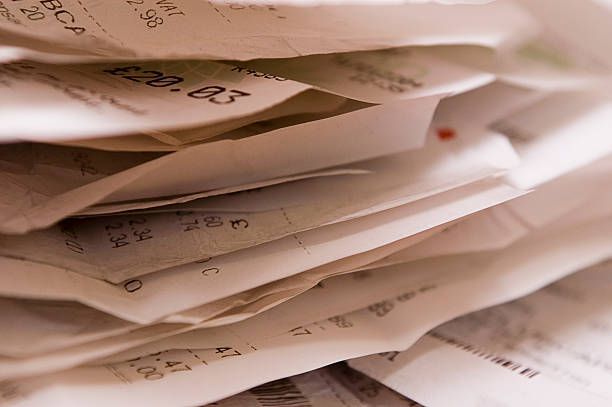
Gone are the days when you had to keep shoeboxes full of fading paper receipts. But many individuals and business owners still wonder: do I need to keep paper receipts for tax purposes? The short answer is no—but you do need to keep records. Let’s walk through what the ATO expects, how to store your records properly, and how to make life easier at tax time. The Australian Taxation Office (ATO) does not require you to keep physical paper receipts—but it does require that your records be: Legible (easy to read) Accurate Complete Stored safely for at least 5 years That means digital copies are perfectly acceptable, if they meet the above criteria. You can store your receipts in many formats: Scanned images or PDFs Photos from your phone (if details are clear) Emails or digital invoices Files stored in cloud systems (like Google Drive, Dropbox, or OneDrive) Just make sure: The date, amount, supplier, and purpose are clearly visible. You can access the file if needed (e.g. if the ATO audits you). Here are some easy ways to stay organised and compliant: 1. Take a Photo Straight Away Got a work expense? Snap a photo of the receipt on your phone before you lose it. 2. Use Cloud Storage Create a folder for each financial year and upload scanned receipts, invoices, and bills. Bonus: no risk of fire, water damage, or faded ink. 3. Accounting Software Tools Programs like Xero, QuickBooks, and MYOB let you upload and attach receipts to specific transactions. Easy and secure. 4. Label Everything Clearly Use file names like “2025-03-01 - Bunnings - Office Shelving - $124.pdf” so it’s easy to search. How Long Should You Keep Records? For individuals and sole traders: 5 years from when you lodge your tax return. For companies and trusts: often 5–7 years, depending on your structure and obligations. If you’re claiming deductions for depreciable assets, keep records for 5 years after the asset is fully written off. What Not to Do Don’t throw away receipts until they’ve been safely saved digitally. Don’t rely on ink receipts—they fade fast! Don’t store files only on your phone—back them up in the cloud or on a secure computer. You no longer need to keep piles of paper, but you do need to be smart about saving your receipts. With digital tools and a little organisation, you can stay ATO-compliant and reduce tax-time stress.

Buying your first home can be a daunting process, but one of my key tips would be to make yourself aware of the government incentives that are available. These include: First Home Guarantee The First Home Guarantee enables first home buyers to buy or build their new home with a 5% minimum deposit of the property value and borrow up to 95% from your lender. Housing Australia will provide a guarantee to the lender, up to 15% of the property value. Eligibility Criteria To be eligible for the first home guarantee, you need to: - Be an Australian citizen or permanent resident - Have taxable income below the individual cap of $125,000 or $200,000 combined for joint applicants - Have a minimum deposit of 5% of the property value - Be at least 18 years old - Be a first home buyer or not have owned a property in the last 10 years in Australia - The home must be owner-occupied Various types of homes can be covered under this guarantee and an eligibility tool is available here: https://www.housingaustralia.gov.au/support-buy-home/eligibility-tool First Home Owners Grant (FHOG) If you are buying or building a new home valued up to $750,000, you may be eligible for a one-off grant of $10,000. The home must not have been previously sold or occupied, rented or leased out. Eligibility Criteria To be eligible: - You must be at least 18 years of age at settlement date or at the time construction of the home is finished. - At least one applicant (you or other part owner/s) must live in the home for at least 12 months, within 12 months of settlement or completion of construction. There are exceptions to this requirement for Australian Defence Force members and there are limited circumstances where this requirement may be varied. You will not be eligible, if you and/or your spouse: - Have already received the FHOG. - Have owned another residential property in Australia prior to 1 July 2000 - Have lived in a home that either of you owned, on or after 1 July 2000 for more than 6 months There are some exceptions to these requirements, and a checklist for eligibility is available here: https://www.sro.vic.gov.au/first-home-owner/will-i-be-eligible-first-home-owner-grant#1 Land Transfer (Stamp Duty) Exemption or Concession Stamp duty is payable when you buy a home or property, or on the transfer of property. The amount you pay will depend on the dutiable value of the property, how the property is used, whether you are a foreign purchaser and if you are eligible for any exemptions or concession. The duty exemption or concession is available in addition to the FHOG, for those purchasing their first home and principal place of residence, which can be previously owned /established or new. If your new home is valued up to $600,000, you may be eligible for a duty exemption, where you will pay no stamp duty on the purchase. If your new home is valued between $600,001 to $750,000, you may be entitled the duty concession, where you will receive a reduction of stamp duty payable. The value of the property (dutiable value) is usually the contract price, however if the price you pay for the property is less than the market value, the dutiable value will be the market value. To be eligible for the exemption or concession: - Your contract of sale must be dated on or after 1 July 2017. If your contract date is prior to this date, you may be eligible for the concession only. - All the purchasers of the property must meet the same eligibility criteria as the FHOG. - You or your spouse must not have already received the exemption or concession. How much stamp duty will I pay? - A calculator is available to calculate the duty you would pay, and can be accessed here: https://www.e-business.sro.vic.gov.au/calculators/land-transfer-duty Think you have overpaid your duty? - You can apply for a reassessment for up to 5 years after the duty was paid if you were eligible for an available benefit and didn’t claim it. Visit this link: https://www.sro.vic.gov.au/land-transfer-duty/apply-for-a-duty-refund Special Circumstances and Other Eligibility: You may also be eligible for a duty exemption, concession or reduction under some of these circumstances: - Buying an off-the-plan property? You may be eligible to receive a duty concession as a first homeowner buying an off-the-plan land and building package or a refurbished lot, eligibility can be accessed here: https://www.sro.vic.gov.au/land-transfer-duty/offtheplan - Buying vacant land to build your first home? You may may be eligible for the stamp duty exemption or concession, and eligibility can be accessed here: https://www.sro.vic.gov.au/first-home-owner/exemption-concession-reduction#vacant-land - Pensioner or commonwealth concession cardholder? There may be special duty concession or exemption available, for more information, visit https://www.sro.vic.gov.au/land-transfer-duty/pensioner-and-concession-cardholder-duty-reduction - First home owner with a family? As a first homeowner with a family who bought their home on or after 1 January 2006, you may be entitled to a duty exemption or concession, eligibility can be accessed here: https://www.sro.vic.gov.au/first-home-owner-with-family-exemption-or-concession Temporary Exemptions and Concessions: Other temporary benefits available to first home buyers, even if you don’t qualify for the first home buyer duty exemption or concession include: - Duty waiver for purchases of Victorian residential property with a dutiable value of up to $1 million for contracts signed on or after 25 November 2020 and before 1 July 2021. - Duty exemption or concession for the purchase of residential property, with a dutiable value of up to $1 million located within the City of Melbourne local government area. More information about these temporary benefits can be found here: https://www.sro.vic.gov.au/first-home-owner/exemption-concession-reduction More information for First Home Buyers For more information, visit https://www.sro.vic.gov.au/first-home-owner
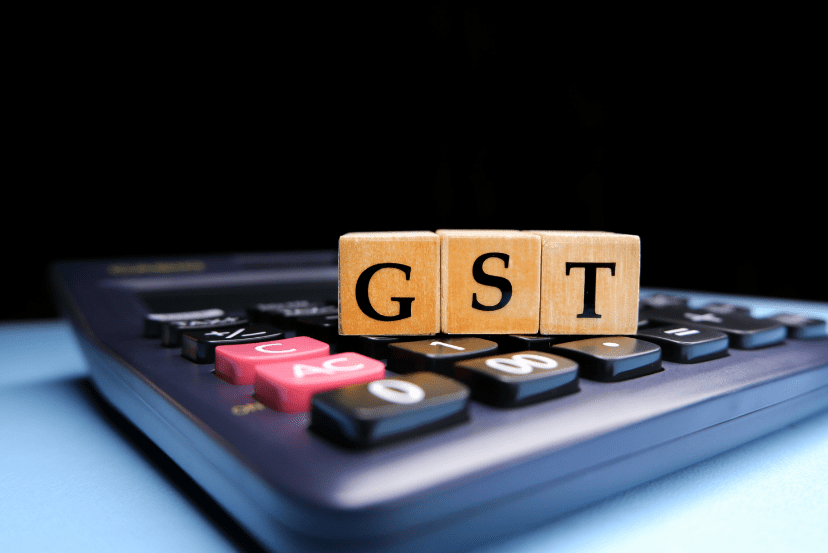
It is common for businesses to make mistakes when it comes to goods and services tax (GST). As a result of those mistakes, businesses may underpay by claiming credits to which they are not entitled, or they may overpay the ATO. It is important to understand some discrepancies that may arise whilst you, as a businessperson, are reconciling your accounts. Below are some common mistakes to be aware of: 1. Not every business expense includes GST. The following purchases won’t have GST attached: - Bank fees & interest payments - Most basic food items and medical supplies - Council & Water rates - Most motor vehicle registration fees - Stamp duty - ASIC fees - Land Tax - Donations You are attempting to recoup unpaid GST if you claim credits on these expenses. Always check whether a supplier invoice includes GST before you claim a credit. 2. Claiming GST twice It is common to report the same income or expense twice. Below are some examples when this may occur: - Financed purchases: a business buys an asset (e.g., a vehicle), and claims the full GST credit up front, then later claims GST on each finance payment. Finance repayments do not include GST as this has been accounted for with the purchase of the asset. - Duplicated sales entries: a business accidentally records the same sale twice and pays double the GST it collected. These errors overstate your GST and cause the business to either pay more to the ATO than it owes or to claiming a larger refund than the business is owed. 3. Mixing Business and personal expenses - Claiming GST on personal purchases: GST credits apply only to business expenses. - Not splitting business and personal use: if you buy a laptop and use it 50% for personal use, you can only claim the 50% of GST used for business purposes. Most businesses should have a drawings / loan to director account in their software to account for personal expenditure from the business. 4. Claiming GST credits on non-registered suppliers & contractors When a business claims GST credits, it is crucial to confirm that the supplier or contractor they have paid is correctly registered for GST. - Use of the ABN lookup website ( https://abr.business.gov.au ) can confirm whether the supplier or contractor is registered for GST. - If they are registered, GST credits can be claimed on the expense. - If they are not registered, then there is no GST included in the total price and the expense must be recorded as a ‘GST-Free’ expense. How to maintain GST compliance? - Ensure your accounting software is properly configured for GST (refer to prior GTP blog articles that outline GST codes), and although an account may be GST inclusive, some transactions will need to be manually changed to GST free in line with expenses that do not attract GST. - Keep valid tax invoices for purchases (even attach these to their corresponding transactions in your software) - Separate business and personal expenditure - Reconcile GST accounts regularly - Ask for help when needed (contact your accountant) Get in touch with your Accountant for any queries.
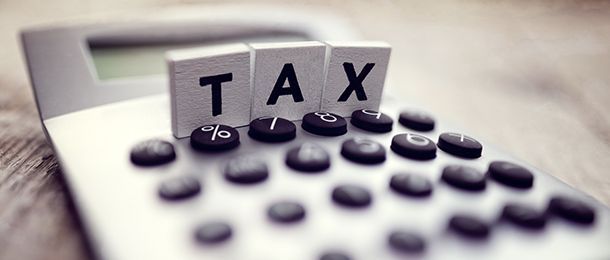
Earlier this year Labor’s Division 296 tax bill (the $3.0m super tax) was abandoned in Parliament as the Government did not have the numbers in the Senate to get it through. However, with Labor’s strong election result and now only needing the support of the Greens, you can guarantee this legislation will be reintroduced to Parliament at the first opportunity. There has been plenty of articles written about this tax. Unfortunately, it is common for important information to be excluded from many of these articles. Most articles concentrate on the fact the tax applies to earnings on a taxpayer’s portion of superannuation savings above $3.0m. However, the $3.0m threshold is not the real issue – the main issue is the definition of “earnings”. Earnings for the purposes of the Division 296 legislation are effectively defined as “movement in member balance” after taking into account after-tax contributions and withdrawals. For members of Self-Managed Super Funds (SMSFs), this means the tax will apply on movements in asset values, including direct property, Australian shares and overseas equities. Therefore, Division 296 tax will apply on profits your SMSF has not made and may never make! You are effectively paying tax on a hypothetical profit! The majority of taxpayers with superannuation savings above $3.0m are prepared to pay a higher rate of tax, but only on ACTUAL earnings , not on possible earnings! At the time of writing the legislation has not yet been re-introduced to Parliament, however it is likely the first assessment date will be on 30 June 2026. This is what we currently know: · The tax will be levied in an individual taxpayer’s name, not the Super Fund. It is understood provisions will exist for the member to apply to their Super Fund to release fund to pay Division 296. · Any negative movements in your member balance will not attract a cash refund of tax previously paid, they can only be used against future Division 296 gains. · The Government has remained steadfast the $3.0m threshold will not be indexed. This means more taxpayers will be subject to the tax over time. · If you are not able to satisfy a Condition of Release (eg are under age 65 and cannot satisfy a retirement condition), you will have no ability to withdraw assets from your Super Fund to reduce your member balance. What should you do now? It is best to do nothing for now – any premature sale or withdrawal of assets in an SMSF could lock in taxable gains as well as eroding your superannuation savings without the ability to re-contribute. It is best to wait until actual legislation has been tabled, so we know what we are dealing with.

Most of us have work-related expenses, and knowing exactly what you can claim can make a noticeable difference to your refund. Travel & vehicle expenses: beyond the daily commute If you use your own car for work, say driving between job sites or to client meetings, you may be able to claim travel expenses . Just keep in mind that your daily commute from home to work isn’t deductible. There are two ways to claim: Cents per kilometre: claim 88 cents per km (2024–25) for up to 5,000 work-related kilometres. This includes fuel, maintenance and depreciation. Just document how you calculated the distance. Logbook method : for claims over 5,000 km or actual costs, keep a 12-week logbook to track business use. You can then claim a portion of car expenses like fuel, rego, insurance, and repairs. Working from home: rules for claiming home office deductions With more Aussies working from home, claiming home office expenses has become standard. Since March 2023, the ATO requires you to keep a record of your actual work-from-home hours, your calendar or timesheet will do! There are two ways to claim: Fixed rate method (70c/hour) : covers energy costs, internet, mobile phone use, stationery, and computer consumables. You can’t claim these separately. Actual cost method : claim a work-related portion of your additional expenses if you have detailed records. You can also claim depreciation on big-ticket office expenses like a desk or monitor (even if using the fixed rate method). Just note: rent, mortgage interest or council rates usually aren’t deductible if you’re an employee. Uniforms, protective gear & laundry: dressing for success Wearing a compulsory uniform with a logo, occupation-specific clothing (like scrubs or chef whites), or protective gear (like high-vis or steel-capped boots)? You can claim the cost to buy and clean them , including dry cleaning. Everyday clothes, even if only worn for work, aren’t deductible. Tools and equipment: big vs small This covers everything from your laptop to a tradie’s toolbox. The rule of thumb: Under $300 : Claim the full cost in the year you buy it, great for items like keyboards, headsets, or work bags. Over $300 : Claim depreciation over its effective life, based on how much you use it for work. This applies to bigger purchases like laptops or tools. Check the ATO’s depreciation and capital allowances tool . Self-education: investing in your career Courses that directly relate to your current income-earning job can be deductible , think a designer doing an advanced Adobe course. Astronomy while working in retail? Probably not. Eligible deductions include: course fees (excluding HECS/HELP) textbooks and stationery internet and phone usage depreciation on computer equipment. Mobile phone & internet: the work/life divide Using your personal phone or home internet for work? You can only claim the portion you use for work. So, if 50% of your internet usage is work-related , you can claim 50% of the cost. Keep a logbook or a diary for a typical month to estimate your work percentage. Overlooked opportunities: don’t miss these tax deductions! Beyond the common work-related expenses, there are other deductions that often get missed: Tax agent fees : yep, the fees you pay to a registered tax agent to prepare your previous year’s tax return are deductible. Investment property expenses: If you own a rental, you can claim certain expenses to reduce your taxable income. They fall into three categories: claim now: loan interest, council rates, repairs, insurance, and management fees claim over time: capital works, borrowing costs, and assets over $300 (via depreciation) not claimable: personal expenses, travel expenses or second-hand assets bought after May 2017. Some pre-rental expenses, like loan interest, may be claimable if your intent was to rent the property. Union fees, membership fees ®gistrations : any fees paid to a professional association or trade union are claimable. Income protection insurance : if you pay premiums for income protection insurance that covers lost income (not life or trauma insurance), you can claim them. Just not if your super fund pays for it. Cost of managing tax affairs : this includes things like tax preparation software or even travel costs to see your tax agent. Gifts & charitable donations : if you’ve donated $2 or more to a registered charity (a Deductible Gift Recipient or DGR), make sure you claim it and have your receipt. Work Hard, Claim Smart Knowing what work-related expenses, you can claim helps you get back more at tax time. Whether it’s driving between job sites, using your home internet for work, or buying tools or uniforms, every deductible expense adds up. Just remember, you need to keep good records and make sure the expenses are directly related to earning your income. With the right approach, you can claim what you're entitled to and avoid missing out on valuable deductions.

The Australian Government has announced significant changes to the Higher Education Loan Program (HELP), including HECS-HELP loans, aimed at reducing the financial burden on university graduates. These reforms, effective from the 2025 financial year, are set to benefit approximately three million Australians. 20% Reduction in Help Debt From June 1 2025 all outstanding HELP debts – including HECS-HELP, FEE-HELP, SA-HEPL, OS-HELP and Vet student loans will be reduced by 20% before any indexation is applied. This measure is expected to alleviate approximately $16 Billion in student debt across the country. The Australian Tax Office will automatically apply this reduction to eligible accounts. https://www.education.gov.au/higher-education-loan-program/20-reduction-student-loan-debt/faqs-20-reduction-all-outstanding-help-loan-debt?utm_source=chatgpt.com Change to Repayment Thresholds Effective July 1 2025 the minimum income threshold for compulsory HELP repayments will increase form $54,435 to $67,000. Additionally, a marginal repayments system will be introduced, where repayments are calculated only on income above the new threshold, rather than on total income. This adjustment means that graduates earning below this new threshold will not be required to make compulsory repayments, and those earning above it will pay a smaller percentage of their income towards their debt. These reforms are part of the government broader effort to make higher education more accessible and to support graduates in their financial journey’s.

Am I in business? This might seem like a strange question, but for some taxpayers it is very important to consider as income generated from a hobby is generally not taxable income and all expenses incurred are not deductible as a result. We’ve had lots of questions about this in the past from people who may be running a stall at local markets selling hand made goods, or creating digital content and receiving remuneration and goods as a part of this. Sometimes it can be hard to tell if this income is derived in pursuing a hobby or operating a business, but there are some important determinations set out by the ATO to consider. The entire scope must be considered in relation to the below, not just one point, for example if an activity is completed ad hoc with no business plan, but the activity is completed with profit making intentions this is likely to be deemed as a business. Essentially, the intention, regularity and purpose of the activity can help to identify whether it is a hobby or a business, the most important thing to consider is what is the purpose of the activity. If you are just completing an activity solely for enjoyment and recuperating input costs by selling to family and friends, this could just be a hobby. But this can get very difficult to determine when getting into the nitty-gritty details, so if you are needing any help in determining whether your activity is a hobby or a business, please contact our office to discuss this further.
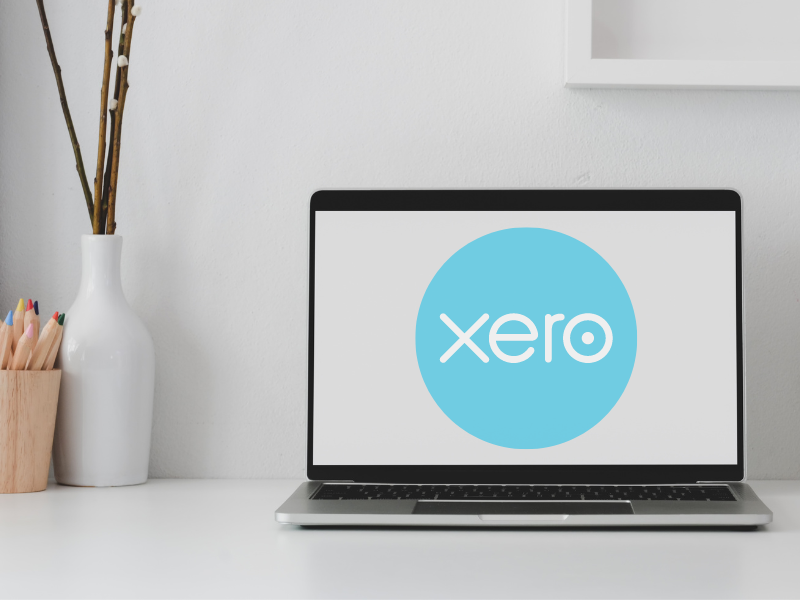
Xero launched Tap to Pay on iPhone for Australian small businesses with a Stripe account on April 10, 2025. This feature allows businesses to accept in-person contactless payments using their iPhone or Android Device and the Xero Accounting app without needing additional hardware. By accepting on the spot payments for services provided this allows businesses to have better cashflow and also reduce administration burden with sending invoices and following up payments not received for services. For more information, please follow the below link to the XERO website: https://www.xero.com/au/accounting-software/accept-payments/tap-to-pay/
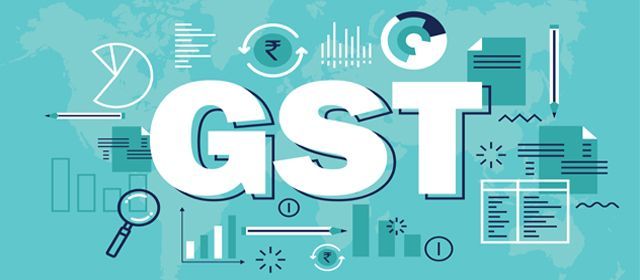
How does GST Registration Work? GST registration is not mandatory for every business or enterprise, but failure to register when required may result in penalties. Once you are required to, you must register for GST within 21 days, and you must have an Australian Business Number (ABN) to do so. When you are no longer required to be registered, you can cancel your GST registration. When does your business need to register? Your business must register for GST: - When your business has a GST turnover (gross income from all businesses less GST) of $75,000 or more. - When you start a new business and expect your turnover to reach the GST threshold ($75,000) in the first year of operation. - If you’re already in business and have reached the GST threshold ($75,000). - If your non-profit organisation has a GST turnover of $150,000 per year or more. - When you provide taxi or limousine travel for passengers (including ride-sourcing), regardless of your GST turnover. This applies to both owner-drivers and those who lease or rent a taxi. - If you want to claim fuel tax credits for your business. It is optional to register for GST if your business doesn't fit into one of these categories. If you choose to register, generally you must remain registered for at least 12 months. How do you register for GST? Once you have an ABN, you can register for GST via the following platforms: - Online Services for Business. - Through your registered Tax or BAS agent. - By phone on 13 28 66. Following registration, you will receive written correspondence with your: - GST registration details, including the effective date of registration. - ABN details if you haven't previously received them. Once registered for GST, you must lodge a business activity statement (BAS). What if you choose not to register? If you're not registered for GST, you should monitor your turnover each month to determine if you’ve reached or are likely to exceed the threshold ($75,000). Failure to register for GST when required may result in you having to pay GST on sales made from the date you were required to register, even if you didn't include GST in the price of those sales. You may also have to pay penalties and interest. Working out your GST turnover Your GST turnover is your total business income (not your profit), less: - GST that is included in sales to your customers - Sales to associates that aren't for payment and aren't taxable - Sales not connected with an enterprise you run - Input-taxed sales you make - Sales not connected with Australia GST Turnover Threshold You reach the GST turnover threshold if either: - Your current GST turnover (your turnover for the current month and the previous 11 months) totals $75,000 or more ($150,000 for non-profit organisations). - Your projected GST turnover (your total turnover for the current month and the next 11 months) is likely to be $75,000 or more ($150,00 for non-profit organisations).
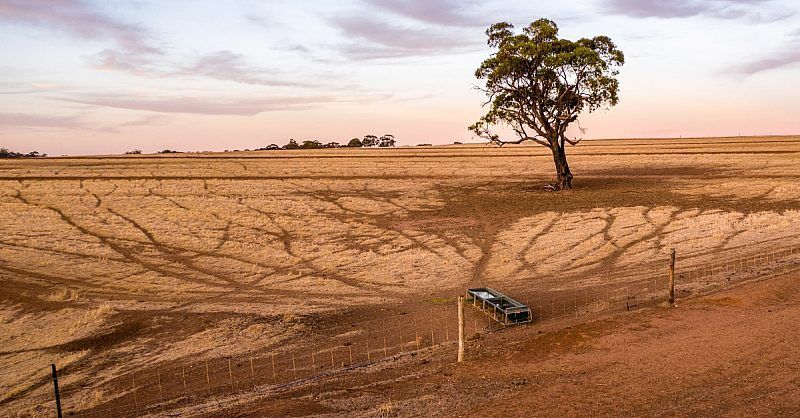
The Victoria Government has provided a number of drought assistant grants and funding to assist Victoria Farms in these current times. The On-Farm Drought Infrastructure grant is available to farmers to implement on-farm infrastructure improvements and business activities to make improvements for drought. Eligible farmers can apply for a $5,000 co-contribution grant that can apply for improvement to water infrastructure upgrades e.g. tanks, troughs, pipes etc, stock containment areas and grain and fodders storage. Additional activities have been included with now water carting and pasture management being included. Eligible farmers in the southwest of Victoria may be eligible to an additional $5,000 top-up making it up to $10,000 they may receive for improvements. For more information and to apply please go to https://agriculture.vic.gov.au/farm-management/drought-support/grants-and-financial-support/on-farm-drought-infrastructure-grants

The introduction of payday superannuation is set to transform how Australian businesses handle employee superannuation payments. Effective from 1 July 2026, employers will be required to make superannuation contributions in line with each payroll cycle, rather than on a quarterly basis. It is crucial for employers to make super contributions for eligible employees from the start of their employment to meet superannuation obligations and avoid penalties. While this change aims to improve employee outcomes, it also places a new layer of responsibility on business owners. What is Payday Superannuation? Under the current system, employers are required to pay superannuation quarterly. However, from July 2026, payday superannuation will mandate that super payments be made with each payroll cycle. This shift is designed to ensure employees receive their superannuation in real-time, reducing unpaid super issues and aligning with modern payroll practices. Benefits for Employers: 1. Simplified Payroll Processes Paying superannuation on payday can streamline payroll operations. Employers can manage wage and super contributions under a single schedule, simplifying their accounting processes. 2. Cash Flow Management Frequent, smaller super payments may ease the financial burden compared to larger quarterly contributions, potentially making it easier for businesses to manage cash flow. Challenges and Considerations 1. Cash Flow Implications Paying super more frequently could strain businesses with inconsistent revenue streams. It’s crucial to reassess cash flow strategies to ensure super is readily available during each payroll cycle. 2. Record-Keeping Accurate record-keeping is essential for effective superannuation management. Employers must maintain detailed records and ensure compliance with evolving regulations. For most businesses this will mean getting on board with a software that supports the payday super obligations. Fortunately, major accounting software platforms like Xero and MYOB have integrated features to support employers in adopting this approach. 3. Compliance Deadlines Employers will have 7 days to process the super from each pay cycle. If the obligation is not met, businesses will become liable for a Superannuation Guarantee Charge, which includes penalties and interest. Tip: You may wish to consider adjusting your payroll frequency. For example, moving from weekly to fortnightly cycles. This will reduce administrative workload and make it easier to effectively manage your superannuation obligations. If you would like any more information regarding Payday Superannuation, please contact us at Green Taylor Partners.

